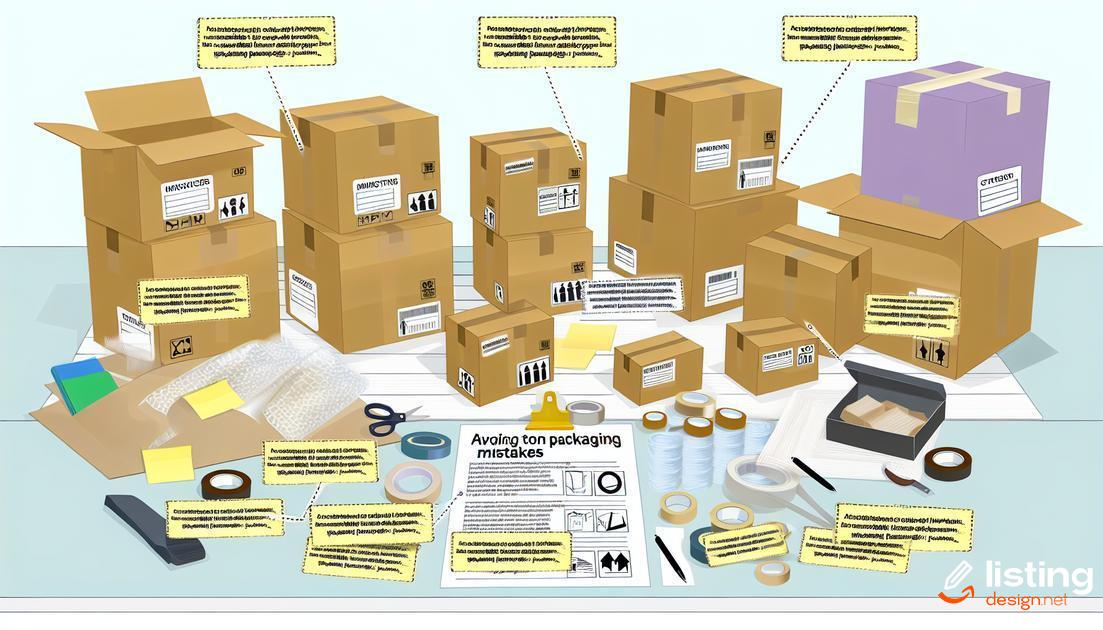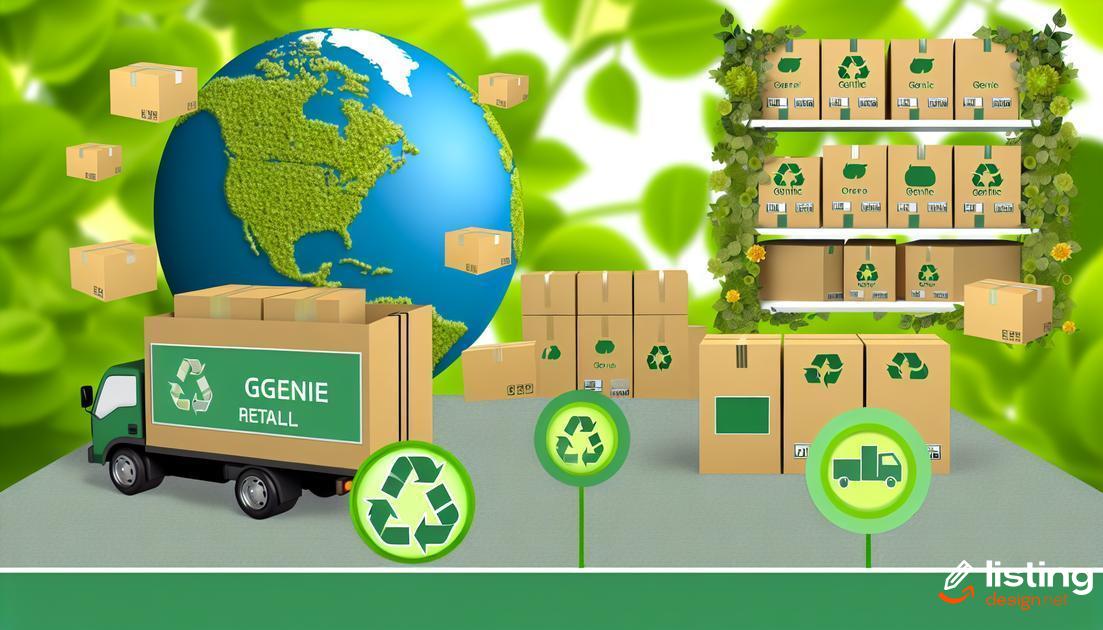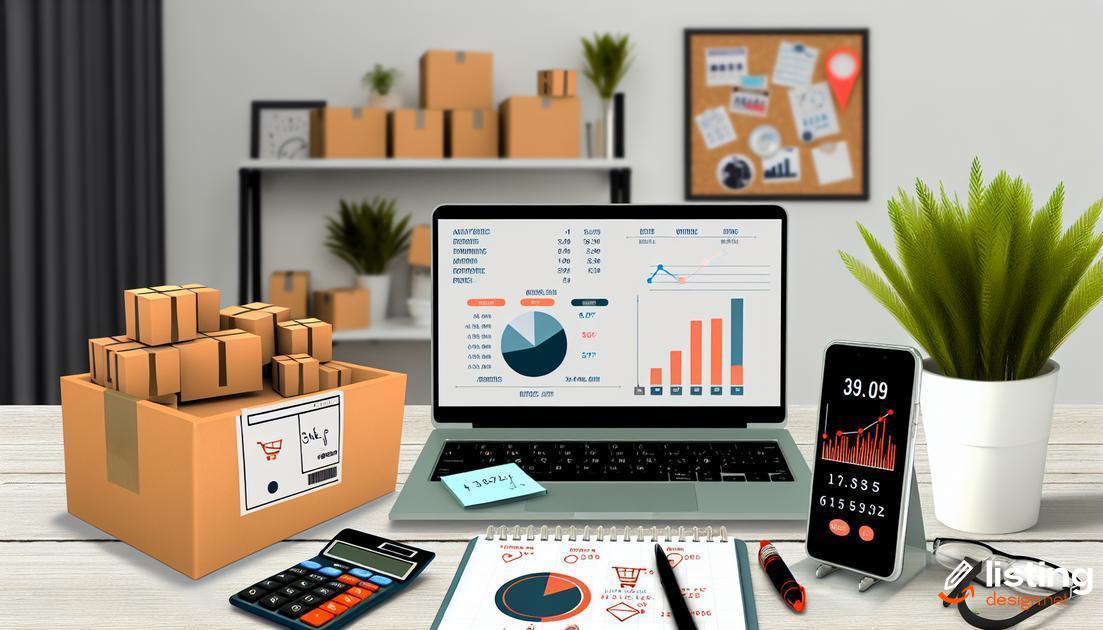Amazon packaging guidelines are crucial for every seller who wants to ensure their products arrive safely and comply with Amazon’s policies. This post will dive deep into the essential requirements and best practices you must follow. By adhering to these guidelines, you can avoid costly mistakes and enhance your business’s reputation. Let’s explore the basics and advanced tips to master Amazon packaging.
Table of Contents
Understanding Amazon’s Packaging Requirements
Amazon has specific packaging requirements to ensure products reach customers safely and efficiently. First, it is crucial to use a robust outer package to prevent damage. Choosing the right box size is essential; it should fit your product snugly without excessive void space.
Packaging Materials
Utilize materials that provide adequate cushioning, such as bubble wrap or air pillows, especially for fragile items. Amazon’s guidelines emphasize avoiding packaging that can easily tear or break.
Package sealing is another critical aspect. Use high-quality packing tape and make sure all openings are securely sealed. Double-tape heavy packages for added security. Additionally, avoid outdated or re-used boxes, as they may not have the structural integrity required for safe shipping.
Regulations
Pay attention to Amazon’s regulations regarding packaging dimensions and weights. Over-sized packages can incur extra shipping fees and may be rejected if they don’t comply with the set limits.
Choosing the Right Materials
When preparing your products for shipment according to Amazon’s Packaging Guidelines, selecting the right materials is crucial. The choice of materials not only impacts the safety of your items but also influences customer satisfaction.
Corrugated Boxes: These sturdy boxes are perfect for most shipments, offering durability and protection against transit damage. Ensure the box size fits your product snugly to avoid unnecessary movement inside.
Bubble Wrap: This material is essential for cushioning fragile items. Wrap each item individually to prevent scratching and breakage during transit. It’s particularly effective for glassware, electronics, and other delicate products.
Sealing Tape: Use strong, high-quality tape to secure your packages. Reinforce the bottom and top flaps with several layers to ensure the box remains closed throughout its journey.
Air Pillows and Packing Paper: These materials are excellent for filling voids in the box, preventing items from shifting. Air pillows are lightweight and absorb shock, while packing paper adds a layer of protection.
Polybags: If you’re shipping apparel or soft goods, polybags are a fantastic option. Choose polybags with a suffocation warning label if the opening is larger than five inches.
It’s imperative to comply with Amazon’s guidelines to avoid penalties and ensure that your customers receive their purchases in perfect condition. The right materials play a vital role in achieving this goal.
Labeling Your Package Correctly
Properly labeling your package is a crucial step in ensuring it arrives at its destination without any issues. A clear and correct label helps prevent mishandling and ensures your package meets Amazon’s stringent guidelines. Start by including all the necessary information such as the recipient’s name, address, and contact details. Accurate labeling also involves adding any relevant handling instructions, like ‘Fragile’ or ‘This Side Up’, to avoid damage during transit.
It’s essential to use high-quality printing for your labels. This ensures that barcodes and QR codes are easily scannable, reducing delays and errors in Amazon’s fulfillment centers. Make sure the label is readable and securely fastened to the package. Cover the label with clear plastic or tape to shield it from moisture and abrasion without obscuring any information.
Another key aspect is the placement of the label. It should be placed on the largest flat surface of the package to avoid folds or wrinkles that could make it difficult to scan. If you are reusing boxes, remove or completely cover any old labels to prevent confusion.
Ensure compliance with Amazon’s additional requirements, such as including the Amazon reference number. This helps streamline the check-in process at the fulfillment centers. For international shipments, double-check that all customs forms and export documents are accurately filled out and attached. This will prevent your package from being held up at customs.
Avoiding Common Packaging Mistakes
When it comes to shipping products via Amazon, avoiding common packaging mistakes is crucial to ensure items arrive safely and comply with Amazon’s stringent guidelines. One frequent error is using boxes that are either too large or too small for the product. Boxes that are too big can lead to unnecessary movement within the package, increasing the risk of damage. Conversely, boxes that are too tight can cause items to be crushed.
Another common mistake is insufficient padding. Products should be well-cushioned with appropriate materials like bubble wrap or air pillows to absorb shocks during transit. Overstuffing the package can also be problematic, as it can cause the box to burst.
Underestimating the importance of proper labeling is yet another pitfall. All packages must have clear and correct labels, including an accurate address and any special handling instructions. Mislabeling can lead to delays or package loss.
Finally, it is vital to securely seal all packages. Using high-quality packing tape and ensuring all seams are properly sealed will prevent packages from opening during transit.
By avoiding these common mistakes, sellers can improve their ship times, reduce return rates, and enhance customer satisfaction.
Benefits of Complying with Guidelines
Adhering to Amazon’s packaging guidelines can significantly boost your business’s reputation and customer satisfaction. By ensuring packages arrive in perfect condition, sellers can receive positive feedback and fewer returns. This translates into higher seller ratings and better visibility on Amazon.
Complying with these guidelines also minimizes the risk of damage during shipping. It provides a framework for selecting appropriate materials and enforcing strict quality control measures. This results in fewer complaints and claims from customers, which can ultimately reduce costs associated with returns and refunds.
Moreover, sellers who follow packaging guidelines are likely to benefit from enhanced efficiency in their shipping process. Standardized packaging can simplify inventory management and speed up order fulfillment. Additionally, it can help sellers stay compliant with legal and regulatory requirements, avoiding potential fines and other penalties.
Overall, meeting Amazon’s packaging standards not only fosters customer trust but also aligns with the platform’s emphasis on security, reliability, and professionalism.
The Role of Sustainability in Amazon Packaging
Sustainability in Amazon packaging is vital for minimizing environmental impact. Amazon emphasizes using eco-friendly materials and reducing unnecessary packaging. Sellers are encouraged to choose recyclable or biodegradable materials where possible.
Packaging Design
should aim to reduce waste and ensure safe delivery without excess. This balance helps meet both environmental and customer satisfaction goals. Amazon has also launched initiatives to reduce plastic use and promote reusable packaging options. Engaging in sustainable practices can improve seller reputation and lower shipping costs over time.
How to Handle Fragile Items
When it comes to Amazon Packaging Guidelines, handling fragile items requires special attention and careful planning. Using the right materials is crucial. Start by selecting sturdy boxes that can withstand the weight of the item and external pressure. Double-walled corrugated boxes are often recommended for extra protection.
Inside the box, use cushioning materials to prevent movement and absorb shocks. Bubble wrap, foam peanuts, and air pillows are some of the best options. Make sure to wrap the item completely and fill the empty spaces to avoid any movement during transit.
For extra security, consider double-boxing. Place the wrapped fragile item in a smaller box first, then place that box inside a larger one with additional cushioning in between. This adds an additional layer of protection against impacts.
Sealing and Labeling
Sealing your package properly is just as important as packing it. Use strong packing tape and apply it to all seams and edges of the box. For added reassurance, use the H-taping method, where tape is applied along the edges and center seal of the box, forming an ‘H’ shape.
Label your package as fragile both on the box and within your Amazon seller account. This will alert carriers to handle the package with extra care, reducing the chances of damage. Clear and correct labeling is essential to comply with Amazon’s guidelines and ensure your package reaches its destination safely.
Following these steps will help you master the art of secure shipping for fragile items, minimizing breakage risks and keeping your customers satisfied.
Tools and Resources for Sellers
Packaging Tools
Using the right packaging tools can significantly affect your shipping efficiency. Invest in high-quality box cutters, tape dispensers, and measuring tools to streamline your packing process. Utilize automated packaging systems if your volume demands it, to save time and ensure consistency.
Resources for Sellers
Amazon provides various resources to help sellers adhere to their packaging guidelines. The Amazon Seller Central portal offers detailed instructions and video tutorials on optimal packing techniques. Moreover, sellers can access packaging guidelines PDFs for quick reference. It’s beneficial to stay updated with the latest changes by joining seller forums and subscribing to Amazon’s newsletters.
Software Tools can also play a crucial role. Consider using inventory management software that integrates with Amazon to help track your packaging requirements and stock levels. Additionally, some applications offer shipping calculators to ensure you meet weight and dimension regulations without exceeding costs.






